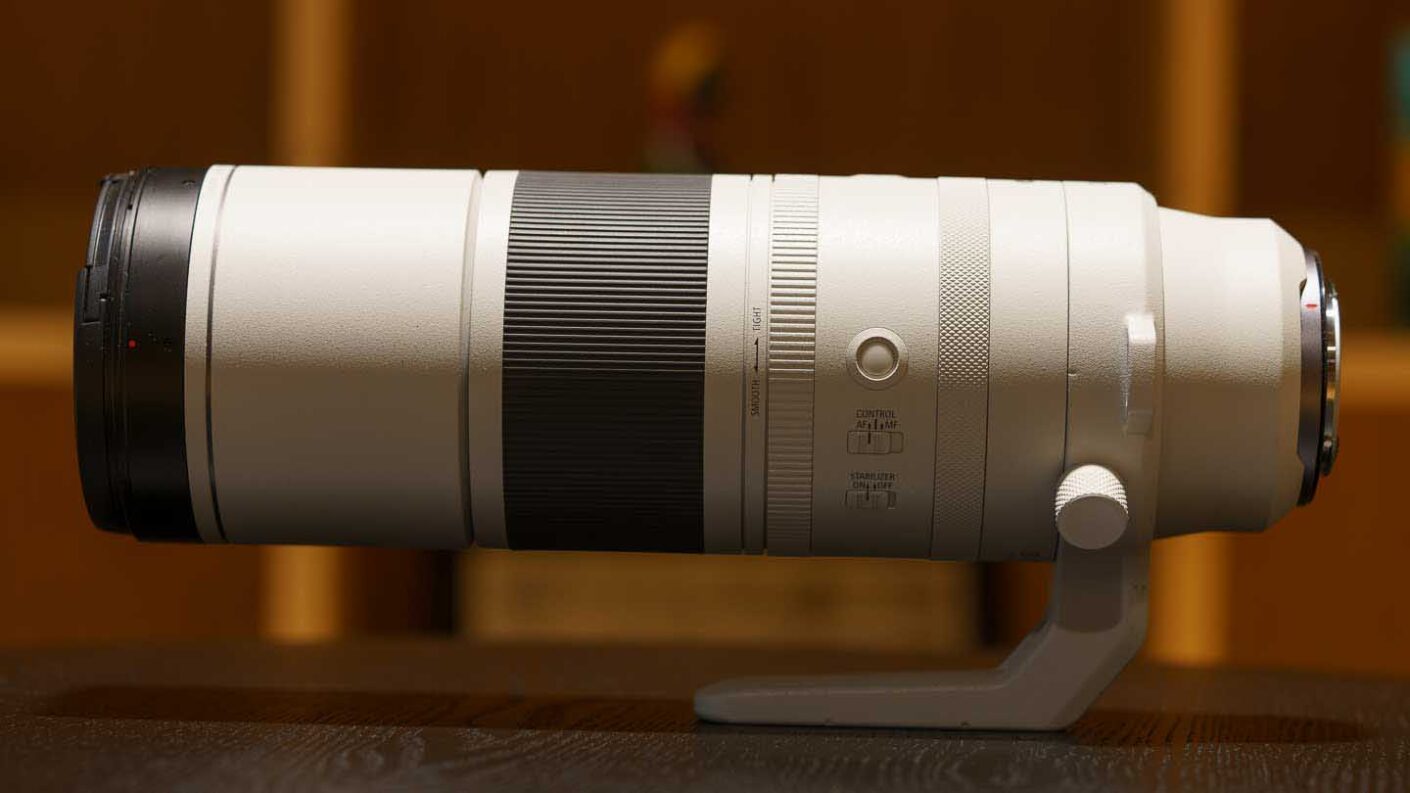While a focal length range of 200-800mm is very appealing for wildlife and outdoor sports photography, there are always times when you need even more reach. In these instances, the Canon RF 200-800mm F6.3-9 IS USM can be used with a Canon RF 1.4x Extender or RF 2x Extender. These take the range to 280-1120mm and 400-1600mm respectively.
Constructed with 17 elements arranged in 11 groups, the Canon RF 200-800mm F6.3-9 IS USM lens incorporates three Ultra-Low Dispersion (UD) elements to enhance image quality across the frame. In addition, Canon’s Super Spectra Coating has been applied to minimise flare and ghosting, ensuring images maintain their clarity and contrast.
Focusing is taken care of by a Nano USM system, which is both quiet and fast. It’s worth noting that unlike the Canon RF 800mm F11 IS STM and RF 600mm F11 IS STM, this lens provides full autofocus coverage when directly mounted on a camera. However, using a teleconverter has an impact as follows:
- When using the RF 2x Extender with the Canon EOS R3, R5, R6, R6 Mark II, or EOS R8, the camera’s autofocus area shrinks to about 40% horizontally and 60% vertically of the total image field.
- For the Canon EOS R7, R10, R50, or R100 paired with the RF 2x Extender, the autofocus coverage diminishes to roughly 60% in the horizontal plane and 80% vertically within the frame.
- When any of the mentioned Canon EOS R series models are used with the RF 1.4x Extender, the autofocus area minimises to nearly 90% horizontal and stays fully covered vertically at 100%.
At the 200mm end, the lens can focus on subjects as close as 0.8m, while at the 800mm end, the minimum focusing distance extends to 3.3m. Midway, at 400mm and 600mm, the closest focusing distances are 1.8m and 2.8m, respectively.
As we’d hope with such a long lens, it has optical image stabilisation, offering up to 5.5 stops of compensation. This improves to a more impressive 7.5 stops at the 200mm end when paired with a camera featuring in-body image stabilisation (IBIS), however, at longer focal lengths the maximum is 5.5 EV.
The lens comes with a tripod foot on a fixed collar that can be rotated to switch the camera between portrait and landscape orientation. It’s also supplied with a deep lens hood.



